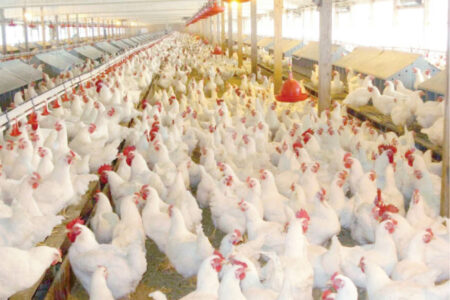The Poultry Association of Nigeria (PAN) has revealed that more than 30% of poultry farms in the country have closed in the last six months due to sector challenges.
Mr. Godwin Egbebe, PAN’s National Publicity Secretary, stated this in an interview with the News Agency of Nigeria (NAN) in Lagos on Tuesday.
He blamed the shutdowns on excessive operational costs, increasing egg prices nationwide.
“Approximately 30% of local poultry farmers across the country have closed their farms due to the industry’s difficulties in the first half of this year.
“The government needs to understand the gravity of poultry farmers’ situation in the sector.
“The distribution of palliatives does not alleviate the sector’s ills; instead, we seek long-term solutions to the existing problems.
“Palliatives frequently end up in the wrong coffers and not with legitimate farmers.
“Most farmers are leaving the sector because they cannot afford to operate their farms.
“Some have sold their cages, and some have sold their farms,” he informed me.
Increasing feed costs, forcing closure
In addition, Egbebe identified rising feed costs as a significant challenge for the sector.
He stated that the rising feed cost has put an enormous strain on poultry farms, making it difficult for many to continue operations.
“Poultry produce prices continue to rise because feed prices rise every other week.
“We bought 25kg of feed for N14,300 two weeks ago; just this weekend, it was N14,800.
“We purchased a bag for N12,000 earlier this year, which sold for N9,000 last year. The increase is affecting the sector.
“Transportation is another major bane in the sector; transportation of poultry produce increases the cost,” he said.
What You Should Know
Farmers and traders attribute the increase to scarcity, resulting from significant closures of poultry farms in the country and a renewed increase in the prices of maize and soya, ingredients used in poultry feed production.
It is worth noting that the increase in egg prices is not isolated and affects various food products.
The price of beans, for example, increased by 70% month after month between April and May 2024, while the price of staple foods across the country increased by 100%.


